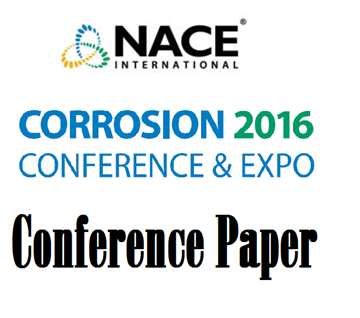The formation brine in a giant carbonate reservoir had high total dissolved solids and high calcium ion concentration. The absence of any major sulfate-scaling problem in this field despite the seawater flood for more than 25 years is attributed to the injection of compatible aquifer waters before the onset of seawater injection.
Product Number:
51300-04397-SG
ISBN:
04397 2004 CP
Author:
Krishnam U.G. Raju and Hisham A. Nasr-El-Din, Saudi Aramco
Publication Date:
2004
$0.00
$20.00
$20.00
The formation brine in a giant carbonate reservoir had high total dissolved solids (more than 200,000 mg/L) and high calcium ion concentration (more than 25,000 mg/L). In an effort to assess compatibility with seawater and formation of sulfate scale, two types of field tests were conducted: 1) Seawater was directly pumped down the tubing-casing annulus into three wells (A, B and C) where it was commingled with the produced water in the wellbore, and 2) seawater was injected into a well 1,000 feet from a producer (D). At the end of the test period, only well-A experienced severe Ca/Sr-SO4 scale in the tubing. Various data were collected during these tests which gave a unique opportunity to validate the output of scale prediction models using real field data.
Most of the available scale prediction models are based on experimental solubility and/or thermodynamics data. However, it was possible to correlate the predicted saturation indices and scale amounts with the field data to obtain the critical saturation index and amount of CaSO4 scale in the producing wells. OKSCALE scale program (University of Oklahoma) was correlated with company-wide field observations. CaSO4 was found to exhibit its highest scale amount at 70 vol% of seawater. In the case of well-A, the average seawater percentage in the produced water was 45 vol%. On the other hand, seawater was less than 20 vol% for wells-B and C. The thermodynamic calculations indicated that the degree of CaSO4 super-saturation was apparently not high enough to form scale in well-A & B. In the case of well-D, the volume of seawater in produced water peaked at 60 vol%, but stabilized at 40 vol%. The accelerated seawater flood in well-D should have resulted in super-saturation and sulfate formation in the reservoir. This possibility was reflected in the equilibrated calcium and sulfate ionic ratio present in the produced water. The critical saturation index and scale amount for CaSO4 were found to be 0.25 and 450 mg/L, respectively.
The absence of any major sulfate-scaling problem in this field despite the seawater flood for more than 25 years is attributed to the injection of compatible aquifer waters before the onset of seawater injection. These waters created a buffer zone, which minimized mixing of the seawater with the formation water.
Key Words: Calcium sulfate, Scale prediction, Mixing of incompatible waters, Seawater flooding




